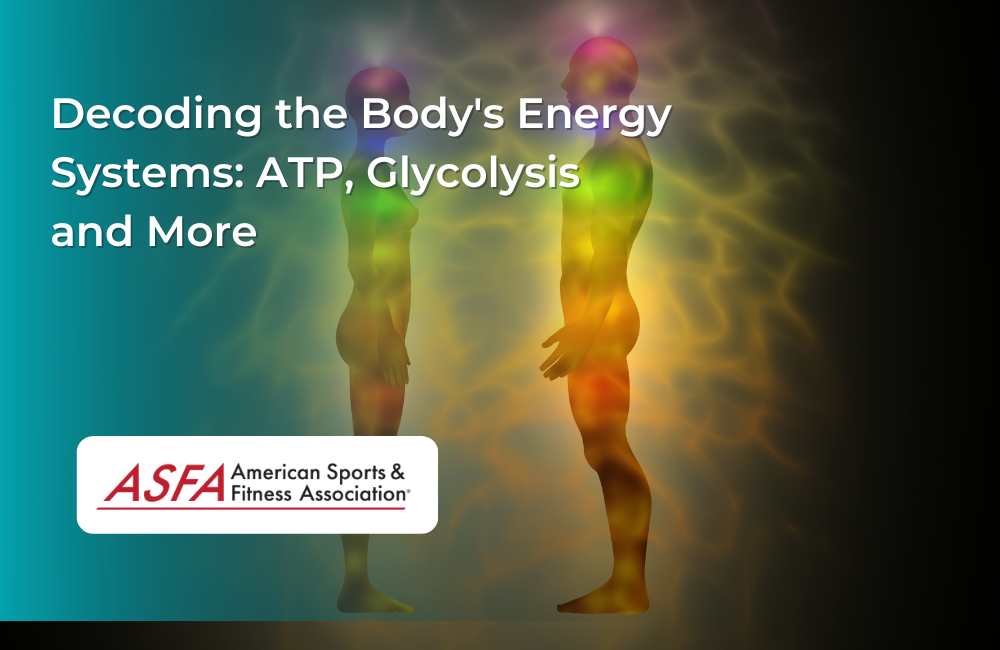ATP is a special type of energy that powers all of your body's functions. It's like gasoline for a car: without it, nothing in your body works right. ATP is the most important form of energy in the human body, and it's essential for everything from breathing to digestion to thinking about how hungry you are (just kidding). In order to understand how to keep your body strong and healthy, it helps to understand how ATP works — and why it matters so much.
What is ATP?
ATP is the body's primary source of energy. It's made up of three phosphate groups and one ribose sugar molecule, which gives it its ability to store and release energy when needed. ATP is created during cellular respiration in your cells' mitochondria--the organelles responsible for converting food into usable energy.
The bonds between these atoms release energy when broken down by enzymes called ATPases; this reaction allows them to be reused again as they take part in various chemical reactions within our bodies (like muscle contraction).
ATP is constantly being broken down and rebuilt in a constant cycle that keeps our cells alive. This energy-making process is called the "molecular fountain of youth." It's also what keeps you going when your blood sugar levels are low or if you're exercising.
How is ATP produced?
ATP is produced in the mitochondria, which are organelles found in every cell of your body. Mitochondria are responsible for producing ATP by using oxygen to break down glucose or fat molecules into adenosine diphosphate (ADP).
The body uses different energy systems to produce ATP at different rates depending on how much energy you need at that moment. For instance, when you're sitting around doing nothing but thinking about how much you hate your job and wishing that someone would just come along and kill everyone so that you could leave work early today--and therefore never have to deal with this terrible place ever again!--your body will rely more heavily on its aerobic systems (which require oxygen) because they produce ATP more quickly than anaerobic ones do.
Why is it important?
It's important to understand how ATP works because it's the primary energy source for your body. ATP powers all of your cells, muscles, and organs at rest and during exercise. The more ATP you have in reserve, the more energy you'll have on hand when needed--and vice versa.
The body produces its own supply of ATP naturally; however, if you want to increase or decrease levels of this substance in order for them to be optimal for training purposes (or any other reason), then there are things that can help: training itself!
How do I keep my ATP levels up?
- Eat a well-balanced diet.
- Exercise regularly.
- Get enough sleep.
- Avoid stress, if possible, by meditating or doing yoga, for example, or by taking time off work to relax when needed. Stress can deplete your ATP levels and make you feel fatigued even when you have plenty of energy in reserve!
- Avoid alcohol and caffeine (including chocolate), nicotine products such as cigarettes and e-cigarettes (vaping) as well as recreational drugs like marijuana because they impair the body's ability to produce ATP from food; they also increase heart rate which uses up more ATP than normal at rest due to increased blood flow through arteries leading away from muscles during exercise - especially after consuming any substance that affects brain function such as alcohol so if you drink then wait at least 30 minutes before exercising again so that it has worn off enough not only so that your heart rate doesn't spike but also so there aren't any unpleasant side effects such as dizziness due to dehydration caused by sweating which might happen if say one drinks too much water before going out hiking outdoors during hot weather conditions..
Learning about the body's energy systems will help you understand how to keep your body strong and healthy.
Learning about the body's energy systems will help you understand how to keep your body strong and healthy. ATP is the fuel that powers all of your body's activities, from breathing to digesting food. It can also be used for movement, growth, and reproduction.
The production of ATP takes place in mitochondria--the cell's powerhouse--and requires oxygen as well as nutrients such as carbohydrates, fats, and proteins (the building blocks of cells). Mitochondria contain enzymes that break down these nutrients into simpler compounds called adenosine diphosphate (ADP), which then combine with other ADPs to form ATP molecules that are stored inside the cell until needed for energy production by muscle cells or other organelles such as neurons because they need a constant supply of energy throughout their lifespan so they don't die off prematurely due lack thereof!
When levels of ATP are low within our bodies' cells due to lack thereof sufficient fuel sources available within them due to insufficient amount consumed beforehand then we start feeling tiredness creeping up on us earlier than usual at times even after waking up fresh after sleeping soundly through the night without any interruptions whatsoever occurring during sleep cycle itself."
Conclusion
In this article, we've explored the body's energy systems and how they work together to keep us healthy and strong. As you can see from the diagram below, ATP is produced in two ways: through glycolysis and oxidative phosphorylation. This means that there are many ways for you to increase your ATP levels without having to rely solely on exercise or diet changes!





